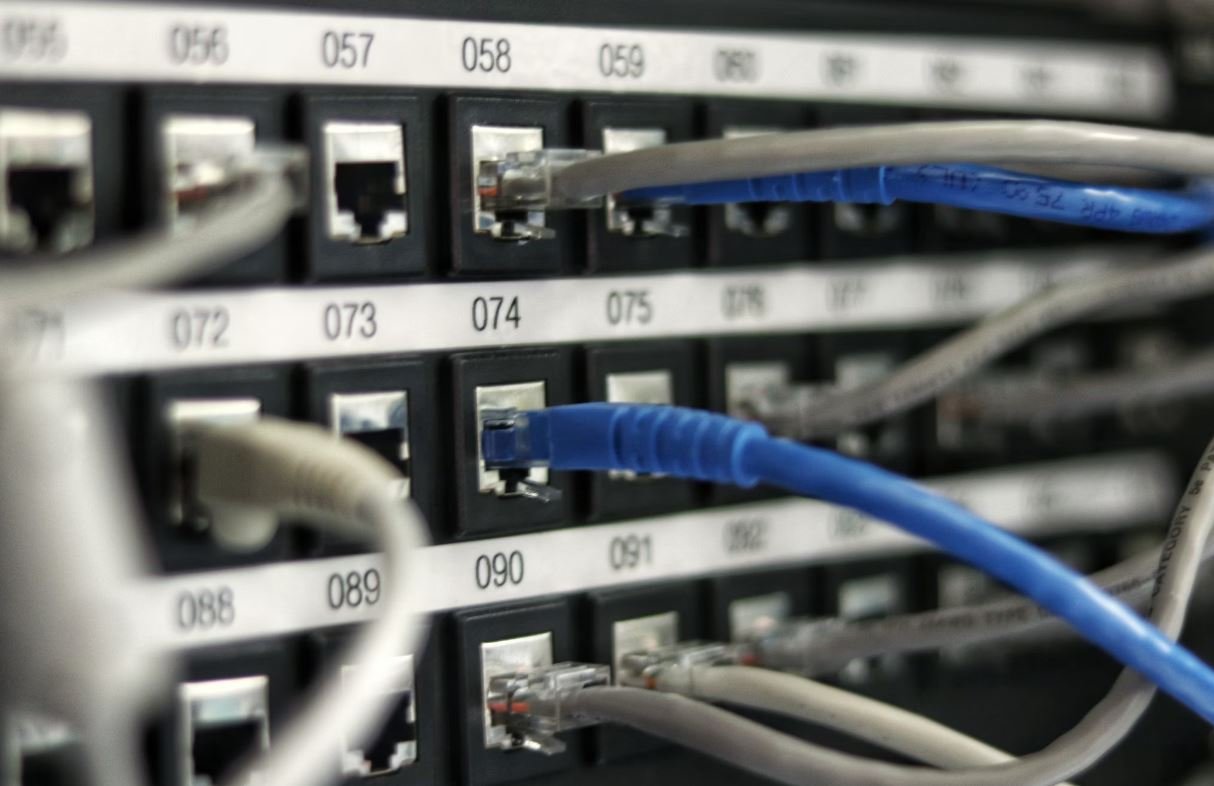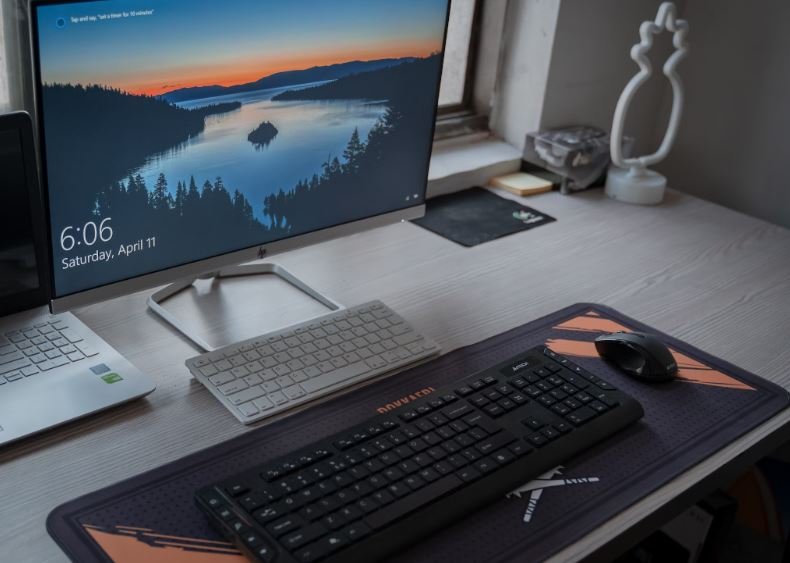Podcast Microphone: Condenser or Dynamic
When it comes to podcasting, choosing the right microphone is crucial to ensure high-quality audio recordings. Two popular options are condenser and dynamic microphones. Each type has its own unique characteristics, advantages, and drawbacks. Understanding the differences between the two can help you make an informed decision.
Key Takeaways:
- Condenser and dynamic microphones serve different purposes in podcasting.
- Condenser microphones are more sensitive and provide a wider frequency response.
- Dynamic microphones are durable, handle high sound levels, and offer good isolation.
- Your choice of microphone should depend on your recording environment and personal preference.
Condenser Microphones
Condenser microphones are widely used in studios and ideal for capturing vocals, instruments, and subtle nuances. They are highly sensitive, making them suitable for recording in controlled environments. Condenser microphones require an external power source, known as phantom power, which is typically provided by an audio interface or mixer. This power is necessary to operate the microphone’s internal electronics.
- Key features of condenser microphones:
- Excellent frequency response, capturing a wide range of audio.
- High sensitivity to accurately reproduce details in the sound.
- Requires phantom power (usually 48V) to operate.
- Key features of dynamic microphones:
- Durable construction that can withstand rough handling and transport.
- Great at handling high sound pressure levels (SPL).
- Good at isolating background noise.
*Condenser microphones excel in capturing the subtleties of a performance.
Dynamic Microphones
Dynamic microphones, on the other hand, are rugged and versatile, making them suitable for various recording environments. They work on electromagnetic induction principles and do not require external power sources. Dynamic microphones are less sensitive compared to condenser microphones, but they can handle high sound pressure levels, making them perfect for capturing loud sources like live concerts or podcasts recorded in noisy environments.
*Dynamic microphones are robust and perfect for on-the-go recording.
Choosing the Right Microphone
Deciding whether to use a condenser or dynamic microphone comes down to the specific needs of your podcast. Consider factors like your recording environment, the intended use of the microphone, and your personal preferences. If you record in a studio or a quiet location and need to capture subtle details, a condenser microphone might be the best choice. On the other hand, if you record in a noisy environment or require a durable microphone that can withstand rough handling, a dynamic microphone is a wise investment.
Comparing Condenser and Dynamic Microphones
| Feature | Condenser | Dynamic |
|---|---|---|
| Sensitivity | High | Low |
| Frequency Response | Wide | Narrow |
| Sound Pressure Level Handling | Low to moderate | High |
*The table provides a quick comparison between condenser and dynamic microphones.
Conclusion
In summary, the decision between a condenser and dynamic microphone depends on your specific podcasting needs. Both types have their advantages and limitations. Consider the recording environment, the level of detail you want to capture, and the durability required for your microphone. Ultimately, choosing the right microphone is essential for delivering top-notch audio quality for your podcast.

Common Misconceptions
Misconception 1: Condenser microphones are always better for podcasting
One common misconception is that condenser microphones are always the best choice for podcasting. While it is true that condenser microphones are often recommended for their sensitivity and ability to capture detailed sounds, dynamic microphones can also be a great option for podcasting.
- Not all condenser microphones are suitable for podcasting.
- Dynamic microphones can provide a more robust sound that suits certain podcasting styles
- Dynamic microphones are generally more durable and less prone to damage from mishandling or accidents.
Misconception 2: Dynamic microphones are only suitable for noisy environments
An incorrect belief is that dynamic microphones are only suitable for recording in noisy environments, while condenser microphones are better for quieter spaces. While dynamic microphones do excel at rejecting background noise, they can also perform well in controlled studio environments.
- Dynamic microphones are great for capturing clear vocal recordings, even in quiet spaces.
- Many popular podcasters prefer the warmer and more intimate sound of dynamic microphones.
- Choosing between dynamic and condenser microphones depends more on personal preference and the desired podcasting tone.
Misconception 3: Expensive microphones always deliver the best quality
Many people assume that the more expensive a microphone is, the better the audio quality it will produce. While there can be a correlation between price and quality, it is not always the case.
- There are affordable dynamic and condenser microphones that offer excellent audio quality.
- High-priced microphones may not necessarily suit every podcasting style or voice.
- Quality audio production involves more than just the microphone; factors like room acoustics and post-processing also play a significant role.
Misconception 4: You need to have a dedicated recording studio to use a good microphone
Some people believe that in order to use a quality podcasting microphone, one must have a dedicated recording studio. While a well-treated studio space can help create optimal conditions for recording, it is not a requirement to achieve good audio quality.
- With proper microphone placement and acoustic treatment, you can record in a home office or even a quiet bedroom.
- Using a portable booth or microphone isolation shield can help minimize room reflections and enhance audio quality.
- Focus on optimizing your environment, regardless of the space you have access to, to achieve the best possible audio quality.
Misconception 5: The same microphone works equally well for all podcasters
Lastly, there is a misconception that a single microphone will work equally well for all podcasters, regardless of their voice, style, or recording setup. However, different microphones have different frequency response patterns, sensitivity levels, and polar patterns that can better suit specific voices and recording scenarios.
- Choosing the right microphone involves considering factors such as voice characteristics, recording environment, and personal preferences.
- Not all microphones will sound the same on different voices.
- It’s recommended to try out various microphones to find the one that best suits your specific needs.

H2: Price Range of Condenser and Dynamic Microphones
When it comes to price, condenser and dynamic microphones can vary significantly. Here is an overview of their price ranges:
| Microphone Type | Price Range |
|—————–|————-|
| Condenser | $100-$1500 |
| Dynamic | $50-$500 |
H2: Sensitivity Comparison
The sensitivity of a microphone determines its responsiveness to sound, capturing more details or background noise. Let’s compare the sensitivity of condenser and dynamic microphones:
| Microphone Type | Sensitivity |
|—————–|——————–|
| Condenser | High |
| Dynamic | Low to medium |
H2: Frequency Response of Condenser and Dynamic Microphones
Frequency response refers to the range of frequencies a microphone can pick up accurately. Take a look at the frequency response of both condenser and dynamic microphones:
| Microphone Type | Frequency Response |
|—————–|—————————|
| Condenser | Extended, wide frequency range |
| Dynamic | Limited range |
H2: Polar Pattern Comparison
Polar patterns determine the microphone’s field of pickup. Here’s a comparison of the polar patterns commonly found in condenser and dynamic microphones:
| Microphone Type | Polar Patterns |
|—————–|————————————–|
| Condenser | Cardioid, supercardioid, omnidirectional |
| Dynamic | Cardioid, hypercardioid |
H2: Power Source Requirements
Some microphones require external power sources. Let’s compare the power source requirements for condenser and dynamic microphones:
| Microphone Type | Power Source |
|—————–|——————————-|
| Condenser | Phantom power or battery-powered |
| Dynamic | None (typically XLR powered) |
H2: Durability and Ruggedness
Durability is an essential aspect, particularly for podcasters who travel or record in different environments. Check out the durability and ruggedness of both microphone types:
| Microphone Type | Durability and Ruggedness |
|—————–|—————————|
| Condenser | Delicate, requires care |
| Dynamic | Sturdy, built for durability |
H2: Application Flexibility
Each microphone type has its applications in various recording scenarios. Let’s compare the application flexibility of condenser and dynamic microphones:
| Microphone Type | Application Flexibility |
|—————–|—————————————|
| Condenser | Studio recordings, vocals, acoustics |
| Dynamic | Live performances, podcasts, interviews |
H2: Pop and Proximity Effect
Pop and proximity effects can impact the audio quality. Here’s a comparison of the effects on condenser and dynamic microphones:
| Microphone Type | Pop Effect | Proximity Effect |
|—————–|————|—————–|
| Condenser | High | High |
| Dynamic | Low | Low |
H2: Noise Rejection Capability
Recording in noisy environments can be challenging. Let’s compare the noise rejection capability of condenser and dynamic microphones:
| Microphone Type | Noise Rejection |
|—————–|——————-|
| Condenser | Moderate to high |
| Dynamic | Moderate to low |
H2: Recommended Use Cases
Considering all the aforementioned aspects, here are the recommended use cases for condenser and dynamic microphones:
| Microphone Type | Recommended Use Cases |
|—————–|——————————————————————–|
| Condenser | Studio recordings, voice-overs, podcasts with controlled acoustics |
| Dynamic | Field recordings, interviews in noisy environments, live performances|
In conclusion, selecting the right microphone for podcasting requires careful consideration of various factors. Condenser microphones offer high sensitivity and extended frequency response, making them suitable for studio recordings, while dynamic microphones tend to withstand rugged environments and are more versatile for podcasting on-the-go or in noisy settings. Understanding the differences between condenser and dynamic microphones empowers podcasters to make an informed decision based on their specific needs and recording conditions.


Leave a Reply